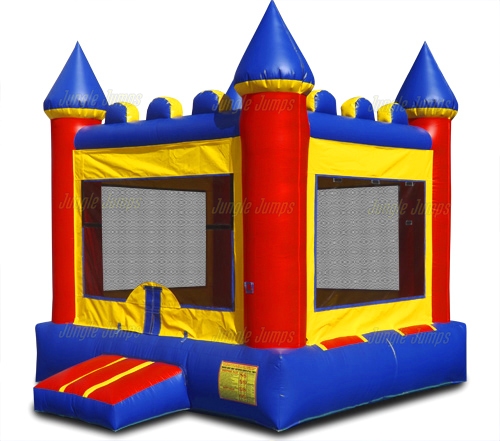 Bounce house rental business owners who live in states like Michigan, Vermont, or New Hampshire all tend to be a little bit jealous of moonbounce business owners who live in warm climates like Florida and California, and this is because people who live in the warm climates often have a much easier time not only renting their moonbounce units during the winter, but also storing them. If you live in a warm climate the only thing you will need to do in order to properly store your inflatable unit is to put it in a clean, dry area. If, however, you live in a colder climate you will find that you have a unique set of challenges in store for you.
Bounce house rental business owners who live in states like Michigan, Vermont, or New Hampshire all tend to be a little bit jealous of moonbounce business owners who live in warm climates like Florida and California, and this is because people who live in the warm climates often have a much easier time not only renting their moonbounce units during the winter, but also storing them. If you live in a warm climate the only thing you will need to do in order to properly store your inflatable unit is to put it in a clean, dry area. If, however, you live in a colder climate you will find that you have a unique set of challenges in store for you.
Welcoming the Snow
Quite often business owners who have a moonbounce rental business in a place like Colorado tends to look forward to the summer months when they know they will be able to rent their units out regularly. And, interestingly enough, even though many times people who live in these climates have to deal with five or six months of winter they tend to do a great deal of business as they often do not have to deal with much competition. Then the challenge as to where to store the unit in the winter arises. Unlike a business owner who lives in a warm state, a business owner who lives in a place where snow will accumulate cannot simply leave your unit out in the shed and hope that it will be okay. Doing so is definitely not a good idea.
If you leave a moonbounce unit in an area like a cold shed you will be exposing your unit to the elements. Even if the unit does not get covered in snow, the extreme change in temperatures is enough to weekend, and potentially damage, the material that the unit is made out of. This can mean having to deal with many rips, and can even transform your once safe moonbounce unit into something very dangerous. If you do live in a cold climate you need to make sure that you store your unit in an area that is room temperature and dry. Try to make sure that it is not exposed to temperatures below 60°. This may require finding a place in your home to store the unit. And while that can be frustrating, dealing with the aftereffects of severe climate changes can be much more annoying than simply finding a place to put your unit in your home during the winter months.
